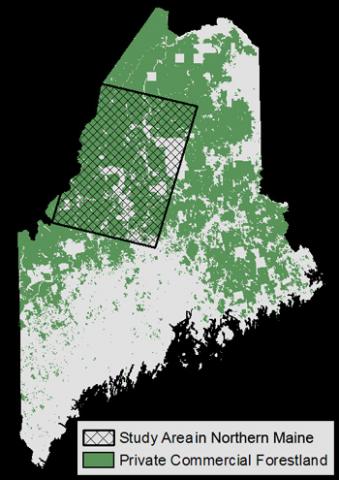Quantifying Partial Harvest Intensity, and Residual Stand Composition among Stable and Changing Forest Landowner Groups in Northern Maine

Since the mid-1990s, land ownership in much of the Northern Forest region has changed from a few industrial timber companies to many timber investment management organizations (TIMOs) and real estate investment trusts (REITs) and to diverse non-industrial owners, such as logging companies or conservation organizations. Major land sales, along with forest policy changes, have influenced harvesting practices to shift from clearcutting in the late 1970s and 1980s to extensive partial harvesting in the late 1990s to present.
To examine patterns of landowner harvest intensity and their effect on remaining forest stand composition and density across the landscape, NSRC researchers combined digital Landsat time-series satellite imagery with manual aerial photo interpretation. They studied 1.8 million hectares in Maine comprised predominately of private commercial forestland typical of the unorganized townships of northern Maine that have experienced recent ownership change and where tree harvesting is the most common disturbance.
Interpretation of high resolution stereo photo plots from 1997 and 2007 revealed significantly greater openings in forest overstory on land that changed ownership from industrial to TIMOs and REITs or to some types of non-industrial ownership, compared to stable industrial owners. Forest stands made up mostly of softwoods had the largest changes in percent of overstory. Stable, old line, non-industrial owners maintained higher canopy closure before and after harvest. Hardwood species represented greater overstory crown closure in post-harvest plots. Extensive partial harvesting may lead to forest composition and structure changes across the landscape that could affect stand quality, biodiversity, and wildlife habitat.
